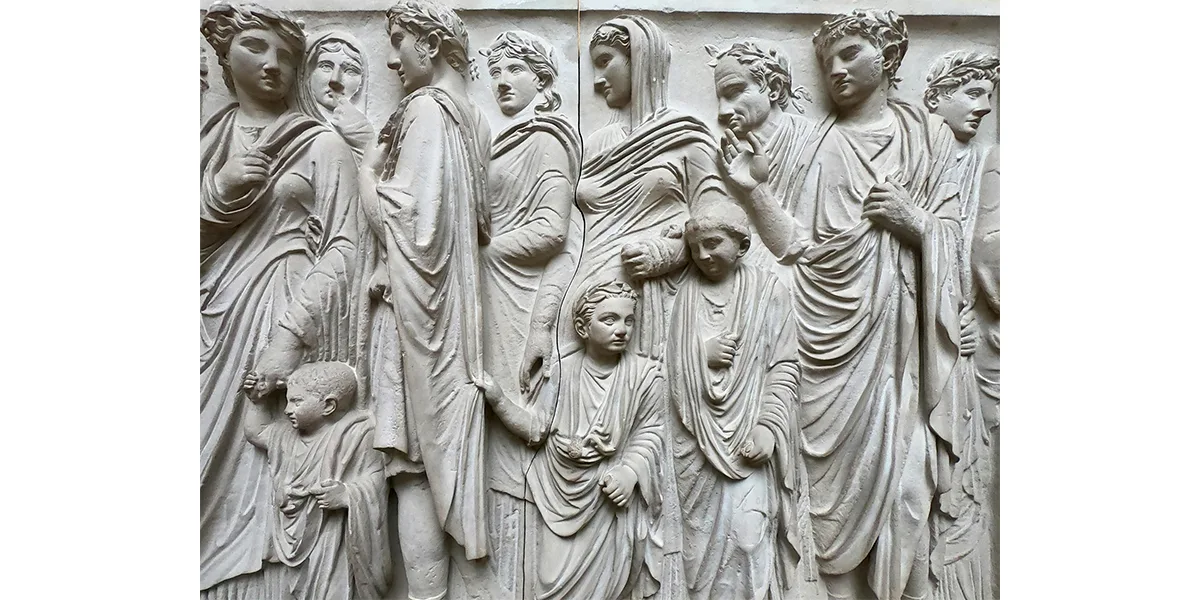Two years ago in early 2022, I heard yet another sermon on Ephesians 5:22–6:4. My wife and I try to be patient when we hear these. We know that our understanding of biblical equality makes us a minority in many congregations here in the American South. Yet, as I listened, something struck me.
The speaker spent most of the sermon addressing how wives should submit to husbands, how women are not qualified for church leadership, and even suggesting that there are secular jobs that women should not hold (such as police officers) because they involve exercising authority over men. After a lengthy time with this, the speaker spent hardly thirty seconds addressing the discussion of slaves and masters in Ephesians 6:5–9, treating it as a one-off about employers and employees, before returning to rehash his points about women.
This was not my first time hearing expositions on this particular passage, but I was amazed at so little context and exegesis—something that I have often found to be the case when the preacher has an axe to grind. These messages are hard to listen to, especially if you’re a woman. They often make inconsistent arguments, first about slavery and then about patriarchy. First, they say, because slavery no longer exists (at least, legally) in Western society, we can apply this passage to work-for-hire situations, the kind of employment that has shaped American labor relations since the outlawing of race-based slavery in 1865.[1] No need for patient exegesis and exposition about slavery; hence, we easily dismiss that portion of the text and concentrate on making sure everyone gets their “gender roles” right.
That’s the way most evangelicals interpret the passage now. We breeze past the context and don’t notice the elephant in the room. Here it is: if we interpret and apply this passage without reference to the household slavery that Paul obviously recognized in Ephesus, why do we stress patriarchal interpretations of Ephesians 5:21–33 in a society that has become post-patriarchal? Even more, if we reinterpret the passage with a modern application with regard to slavery and then fail to do so with the parallel passage on supposed gender roles, are we missing the essence of what Paul teaches in Ephesians 5–6? In my view, that essence involves how Christians who share a fundamental equality in Christ ought to live in a world that does not practice equality.
Historical Christians Recognized the Immorality of Slavery and Patriarchy Alike
Careful interpretation of Paul’s teaching regarding slavery recognizes that Paul in this passage may have been addressing household slaves, who would often be freed after a number of years. Slavery was common in the Roman world. At least ten percent of those living in the Roman world were slaves, and the percentage was significantly higher in Rome itself and in Italy.[2] While it was not necessarily race-based (as in the American South) and some upward mobility was possible, slaves were still looked down on, viewed as property, and often treated harshly.[3] Today, we recognize the fundamental immorality and inequality of slavery and it is for good reason that we no longer legally practice it.
Nor do we willfully practice patriarchy. Like the Jim Crow laws and practices that disenfranchised African-Americans for over a century after the Civil War, similar laws, customs, and practices disenfranchised women. Only in the twentieth century did those laws start to change, and as the late Donald Dayton described, the feminism that challenged these arrangements has distinctive roots in nineteenth-century American evangelicalism and evangelical teaching about the inherent dignity of human persons created in God’s image.[4] When some nineteenth-century American evangelicals started reading their Bibles more carefully, it didn’t take long to come to Genesis 1:27:
So, God created humankind in his image,
In the image of God, he created them;
Male and female, he created them. (NRSV)
Reading even deeper into the Gospels, they found Jesus interacting with women in ways that affirmed this foundational statement in Genesis 1—with the woman caught in adultery (John 8:1–11); with Mary and Martha (Luke 10:38–42); with the Samaritan woman (John 4:1–42), and with the women who were first to discover his resurrection (Matthew 28:1–10; Mark 16:1–11; Luke 24:1–12; John 20:1–18). As Rebecca Groothius titled one of her books, Jesus truly brought Good News for Women.[5]
That good news is part of the wider message of the Kingdom of Heaven that Jesus brought to earth, in which there is neither Jew nor Greek, slave nor free, nor even male and female (Galatians 3:28). Jesus values women in the same way he values men, and despite a deep first-century cultural patriarchy where even marriage contracts sometimes stipulated absolute obedience to the male paterfamilias, Jesus saw women as fully human and fundamentally equal to men.[6] Paul’s idea that husbands practice mutual submission (Ephesians 5:21) by loving their wives made no sense in first-century Greco-Roman culture, but it made perfect sense to a Christ-centered, Kingdom view of the world.
Putting Ephesians 5 Back in Context
Back to Ephesians 5. I wonder if the speaker knew that the word translated as “submit” (NIV) or “be subject to” (NRSV) does not appear in Ephesians 5:22? It does appear in 5:21, meaning that the best way to read the passage is “Submit to one another out of reverence to Christ, wives to your husbands . . .” (5:21–22). Hence, this passage states that submission is mutual. Wives are to submit to their husbands, and husbands are to submit to their wives by loving them the same way that our Lord loves his people.
I don’t want to rehearse the debate over the Greek word kephale, translated as “head” in 5:23. In my view, the context shows that Paul’s use of kephale here refers to “source” as opposed to someone who rules the relationship in an authoritarian manner.[7] But suffice it to say, in describing Jesus Christ as the “head” of the church, Paul uses examples to demonstrate its meaning: Christ expressed love for his church by giving himself up for them (which connects Christ’s love to his sacrifice on the cross; 5:25–27); Christ’s love and sacrifice causes the church to flourish (“that she may be holy and without blemish”); Christ nourishes the church “and tenderly cares for it . . . because we are members of his body” (5:29–30). A husband’s love for (dare I say “submission” to?) his wife is therefore patterned after the example of Christ’s care for his people.
This fits well with the second creation narrative found in Genesis 2, where we read, “Then the LORD God said, “It is not good that the man should be alone; I will make him an ezer as his partner” (Genesis 2:18) While English translations use the word “helper” to translate the Hebrew term here, that English term does not capture its full meaning.[8] It’s better translated as “ally”—a sense that suggests the man and woman are designed to support each other without any sense of hierarchy in their partnership.
One prominent evangelical preacher argues that Christianity has what he terms “a masculine feel.”[9] In other words, he claims that female subordination is built into the fabric of creation and will even exist in eternity. The preacher I heard that morning two years ago had clearly been influenced by this line of thinking. Fortunately, you cannot find that claim in the New Testament; it’s a notion that is foreign to Christian faith—as foreign as the idea of one man owning another.
Last century, Dorothy Sayers published a profound little book whose title asked the question, Are Women Human? I recently reread it and was struck by these words: “Indeed, it is my experience that both men and women are fundamentally human, and that there is very little mystery about either sex, except the exasperating mysteriousness of human beings in general.”[10] Well said.
As I process sermons and messages like the one I heard that day in 2022, I reflect on how slavery and patriarchy were both such large parts of the social and cultural structures of first-century life. Both were integral to Roman society—a society where cultural and social practices affirmed the powerful and the wealthy and marginalized many others, both women and men. These structures are part of our fallen world; they preceded Rome, and they outlasted it. Much of medieval and early modern life continued to affirm them, and they continue to affect Christian teaching today. But these structures are not part of the Kingdom of God, as our Lord’s continued affirmation of women, their value, and their ministry and service make clear. Let us go and do as he did.
Photo by nannanan.art.
[1] The outlawing of slavery in its various forms has been a work in progress throughout the history of the modern world, as detailed in this Wikipedia timeline.
[2] Sandra R. Joshel, Slavery in the Roman World (New York: Cambridge UP, 2010), 8. Joshel offers a comprehensive description and analysis of Roman slavery and how slaves were seen and used in Roman society.
[3] Andrew Lincoln offers a discussion of Roman slavery in the context of this passage in his commentary on Ephesians 5. See Andrew Lincoln, Ephesians WBC (Dallas: Word, 1990), 42: 415–20.
[4] Donald Dayton, Discovering an Evangelical Heritage (New York: Harper and Row, 1976), 85–98.
[5] Rebecca Merrill Groothius, Good News for Women: A Biblical Picture of Gender Equality (Grand Rapids, MI: Baker, 1997).
[6] See Craig Keener, The IVP Bible Background Commentary: New Testament 2d. ed. (Downers Grove, IL: IVP Academic, 2014), 552–53.
[7] Colin Brown, ed., The New International Dictionary of New Testament Theology (Grand Rapids, MI: Zondervan, 1976), II:160.
[8] G. Johannes Botterwick, Theological Dictionary of the Old Testament (Grand Rapids, MI: Eerdmans, 2001), 11:12–18.
[9] Alex Murashko, “John Piper: God Gave Christianity a ‘Masculine Feel,’” The Christian Post, February 1, 2012, John Piper: God Gave Christianity a ‘Masculine Feel’ | Church & Ministries News (christianpost.com).
[10] Dorothy Sayers, Are Women Human: Astute and Witty Essays on the Role of Women in Society (Grand Rapids, Eerdmans, 1971), 49.
Related Resources
Blog Articles
Academic Articles
The Genesis of Equality
On the Significance of Kephalē (“Head”): A Study of the Abuse of One Greek Word
A Meta-Study of the Debate over the Meaning of “Head” (Kephalē) in Paul’s Writings
Toward an Understanding of Ancient Conceptions of “Head”
Kephale is a Body Part: Unified Interdependence in Relationship in Ephesians 5
Is the Head of the House at Home?
Mutual Submission Frames the Household Codes
Selfless Marriage: Ephesians 5:21–33
Audio Resources
A New Humanity
The Worldview of the Bible vs. the Worldview of Hierarchy with Alan Myatt
Video Resources
Women’s Identity is Ezer—a Strong Rescue: Genesis to Revelation (Finnish, English)
A New Humanity
The Worldview of the Bible vs. the Worldview of Hierarchy with Alan Myatt





